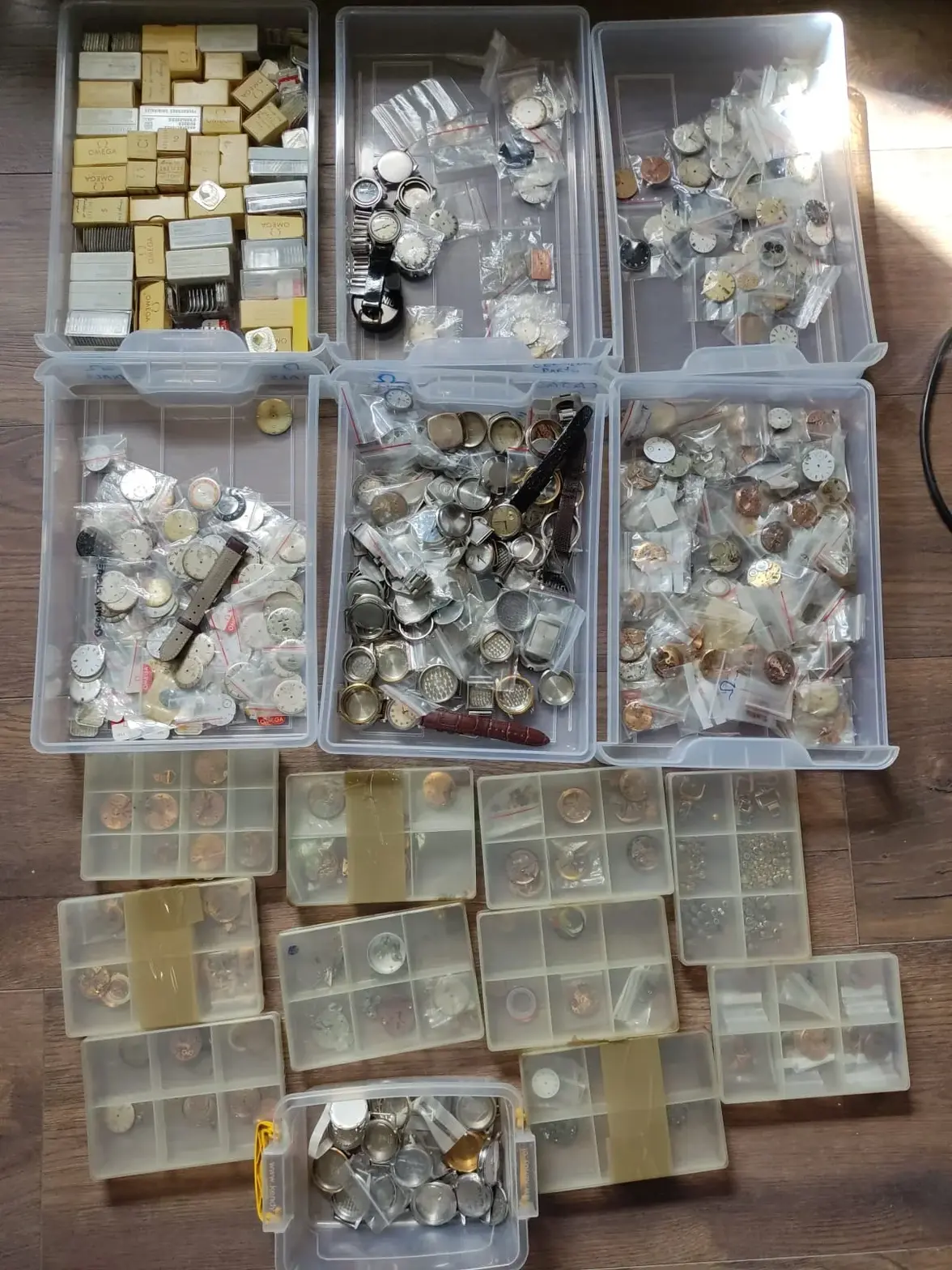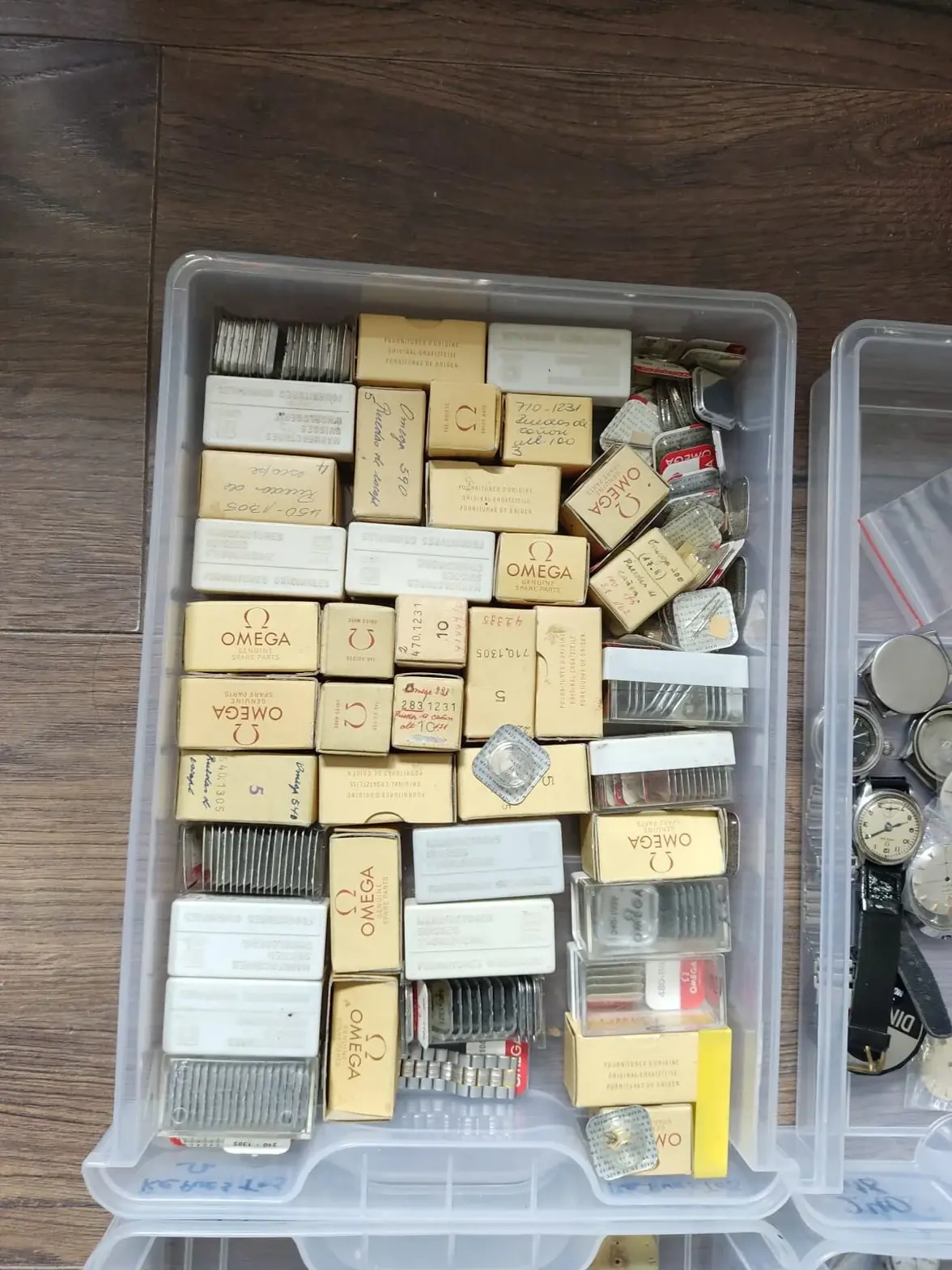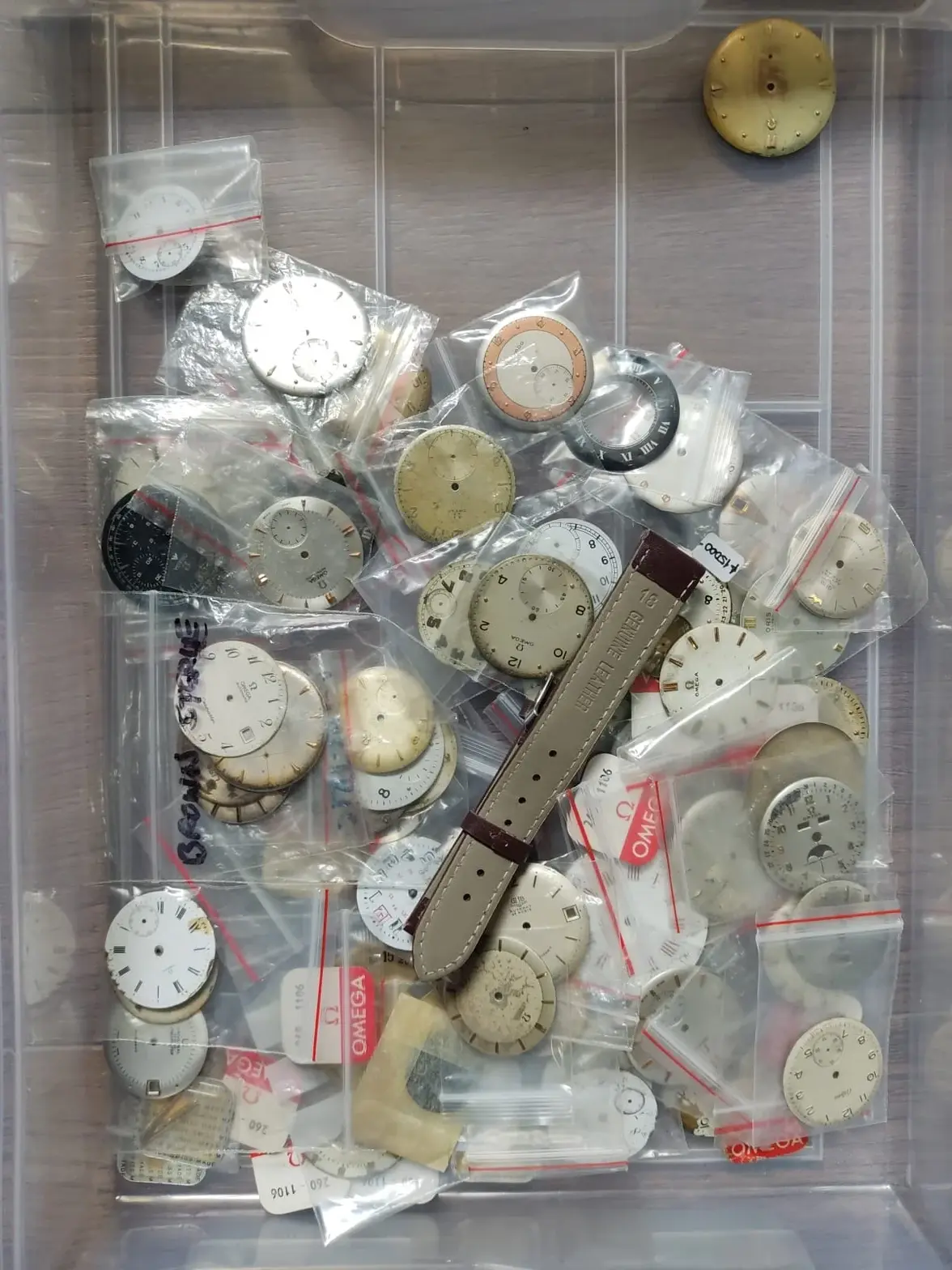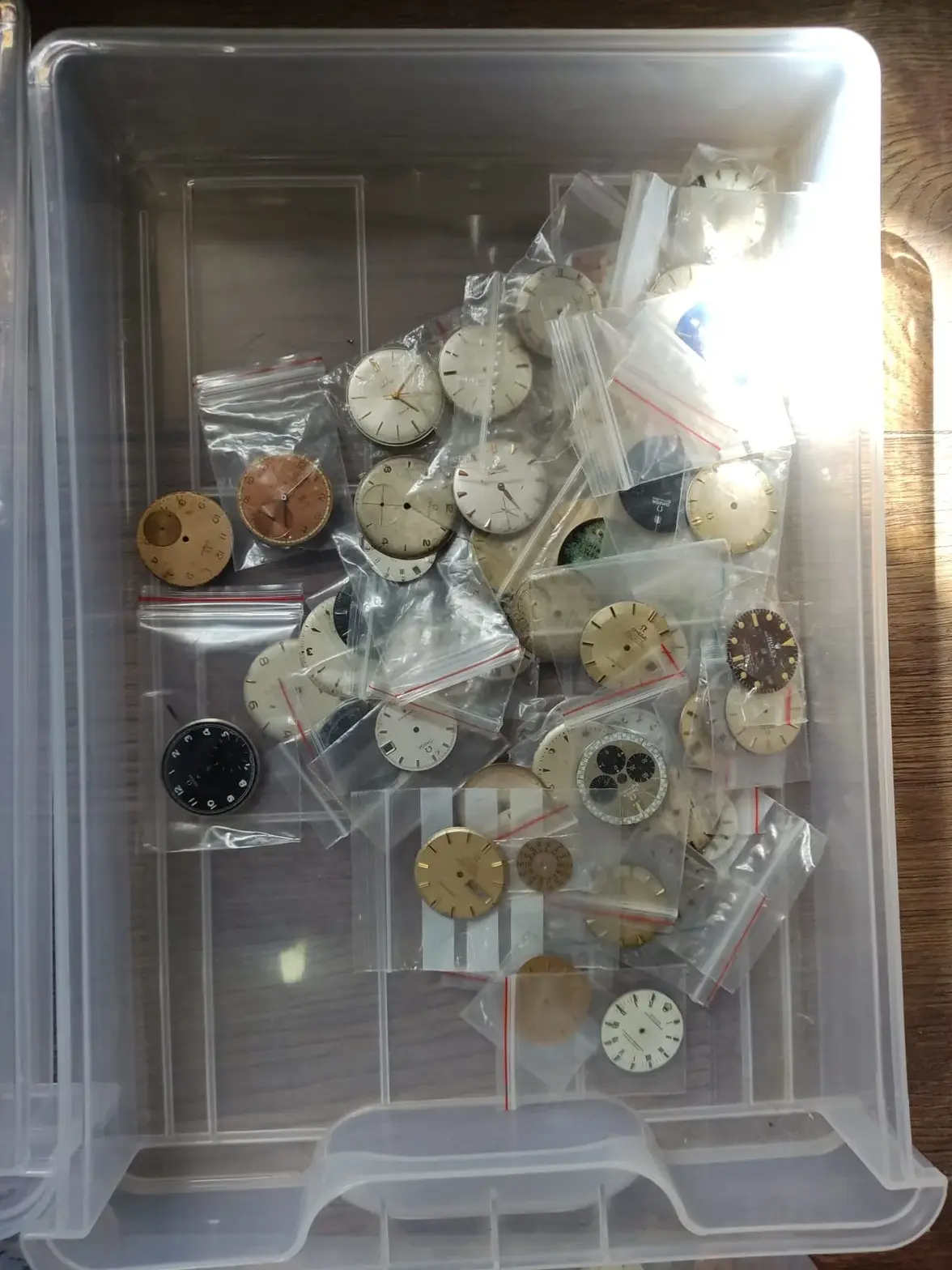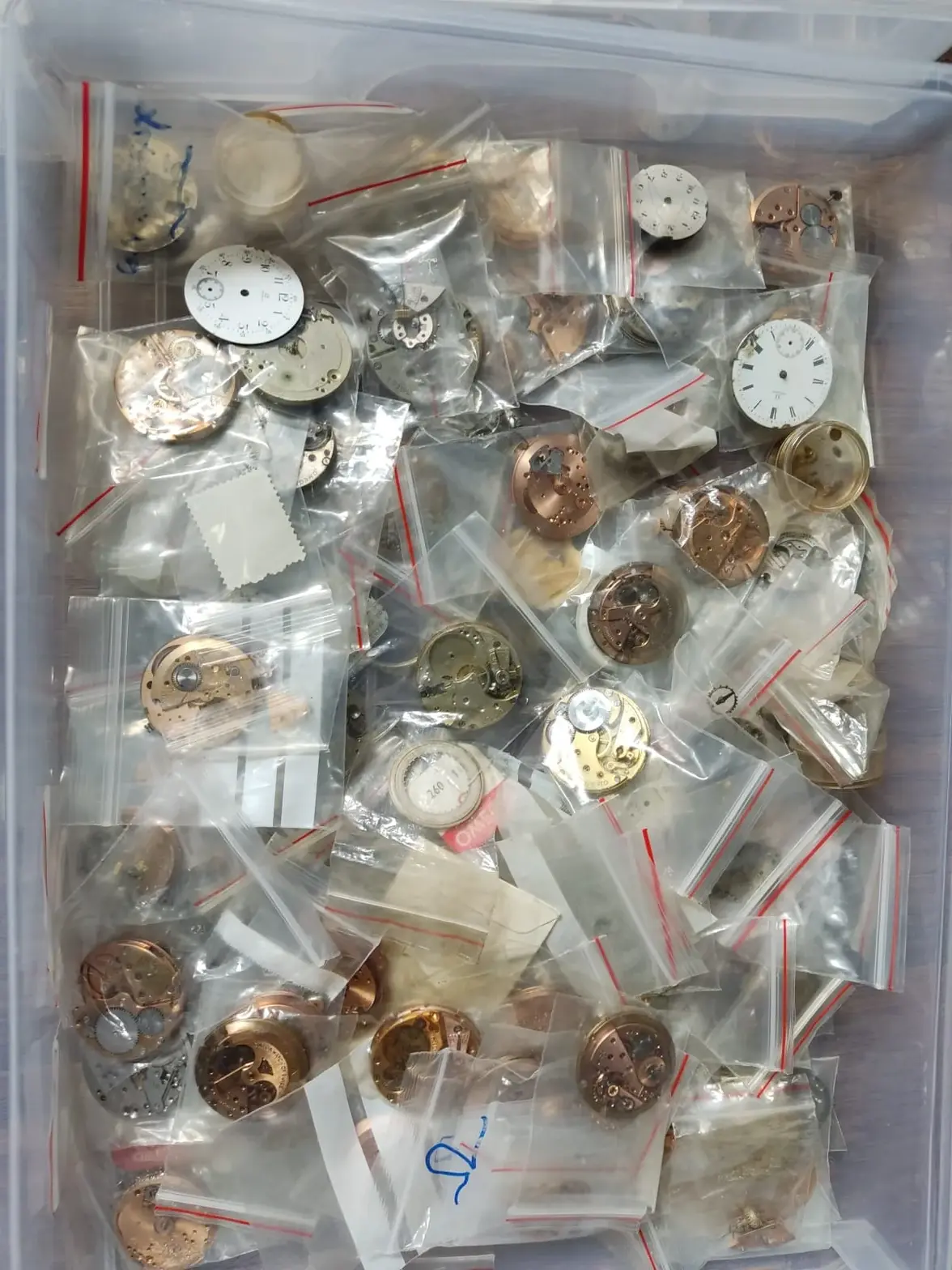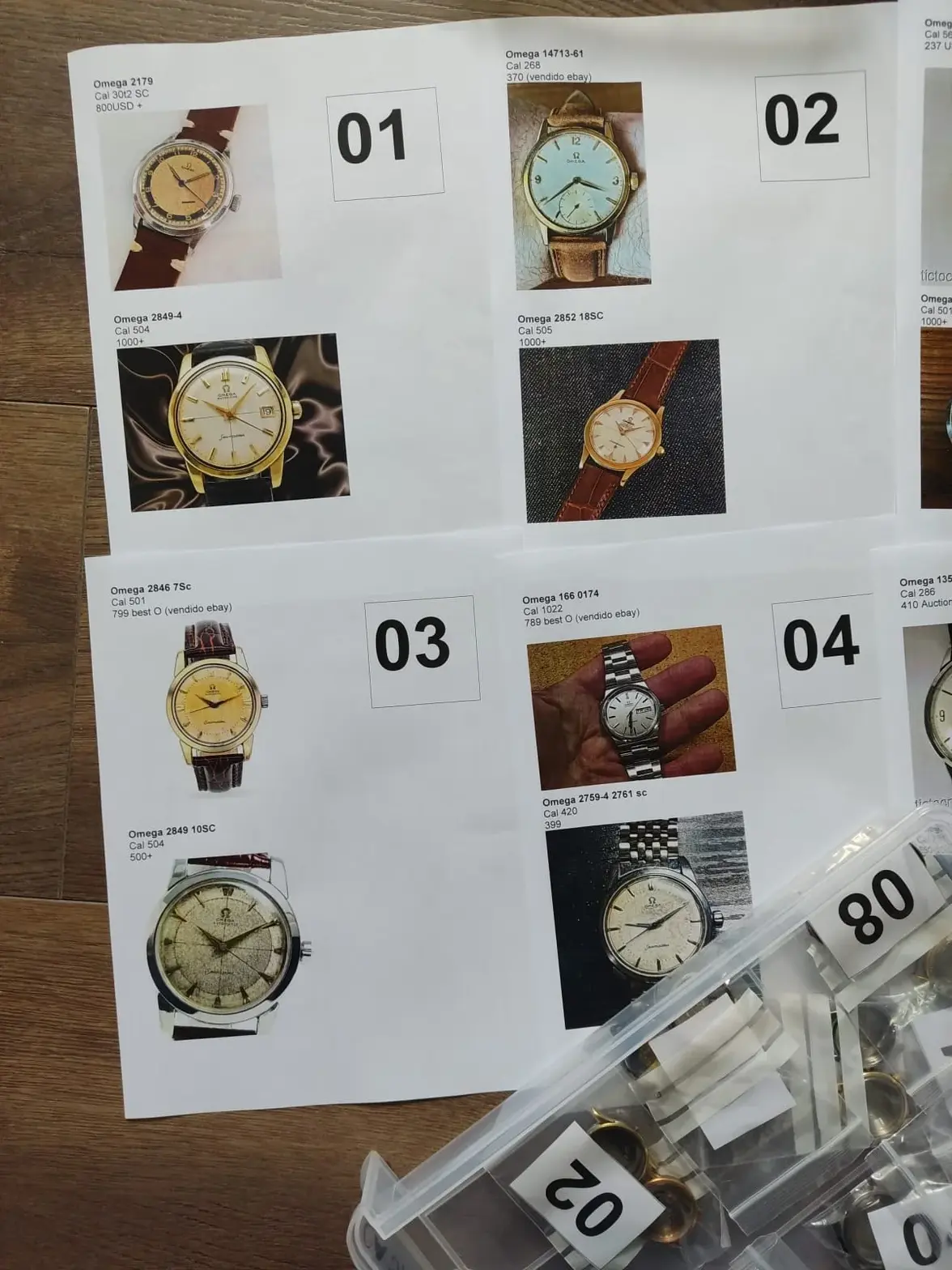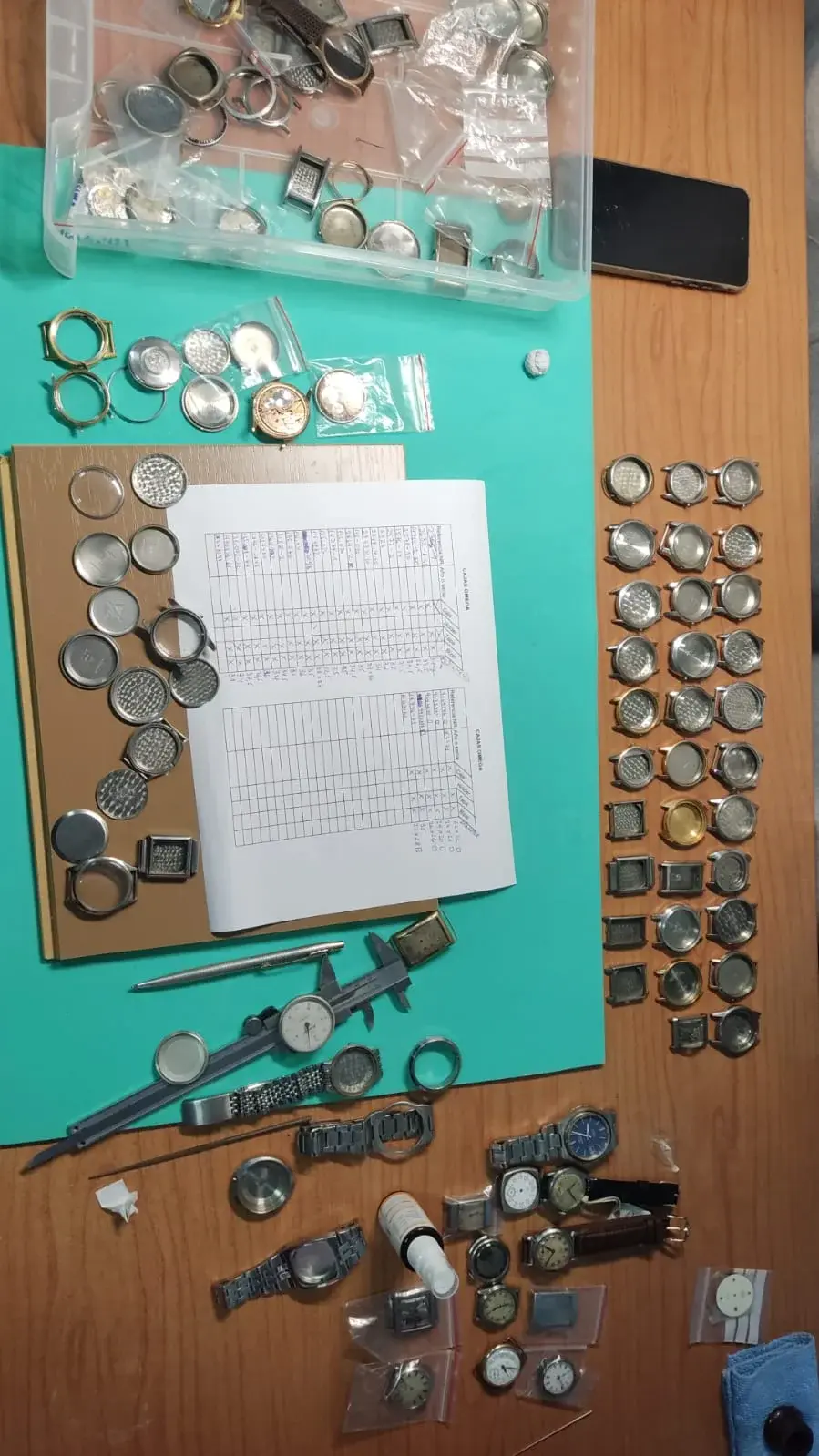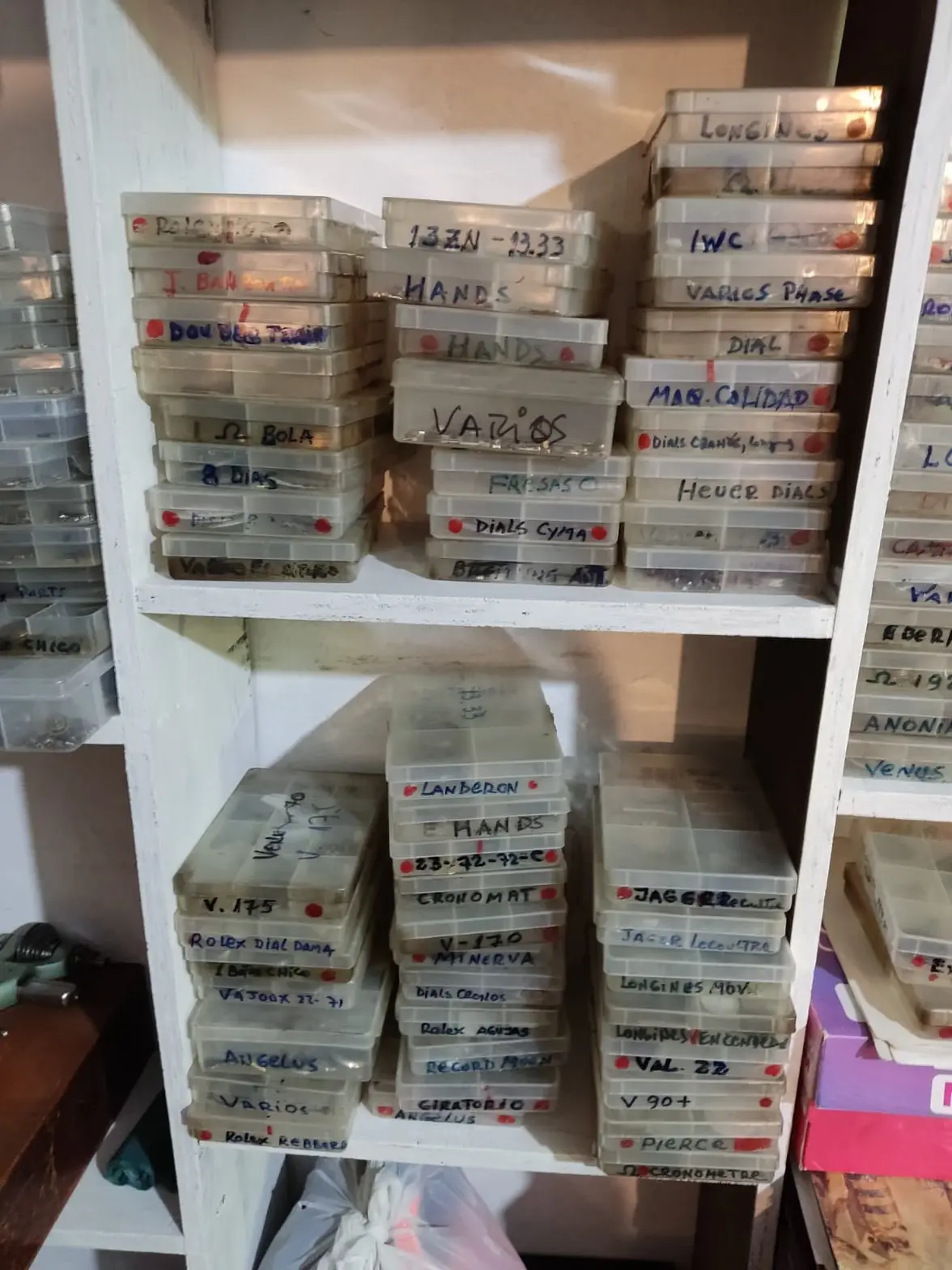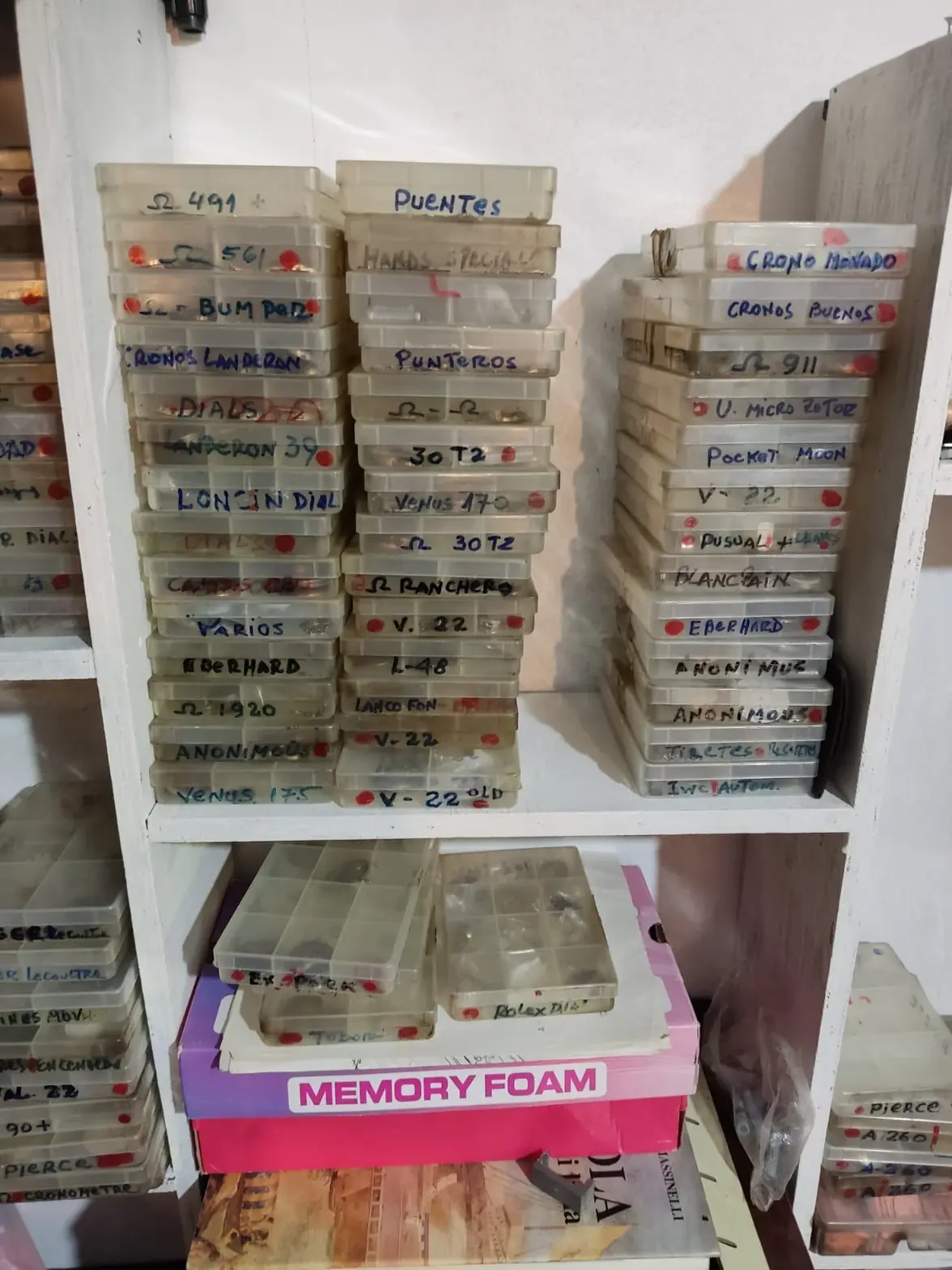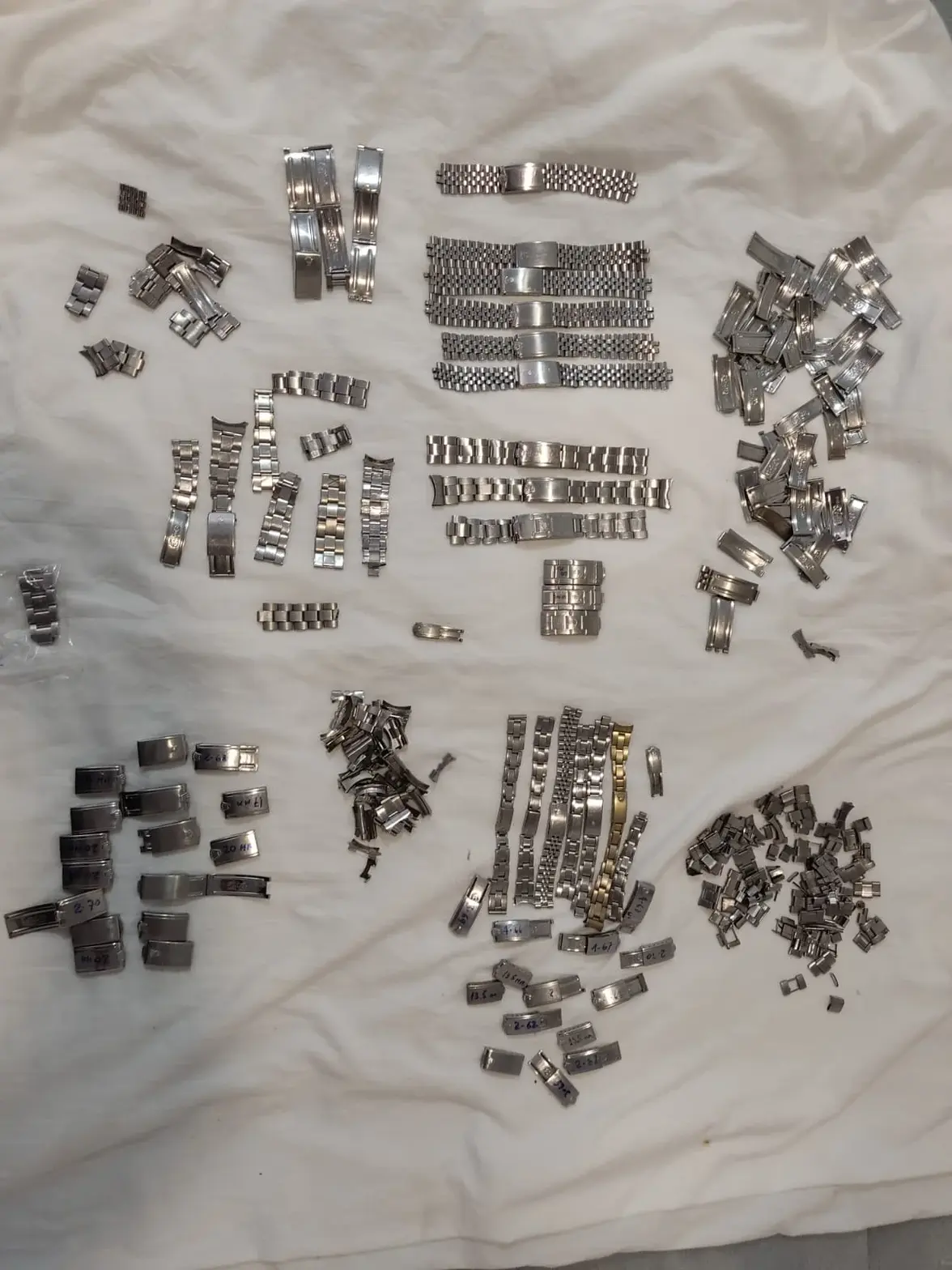SouthCL
·Hello everyone,
I am new to the forum and would really appreciate some guidance from the more experienced members here.
The lot I am asking about actually belonged to my father, and used to buy complete watches, spare parts, and other components. He had the habit of keeping his watches disassembled, and after many years of changes and re-arrangements, the pieces eventually got mixed together. Now I have more than 50 Omega watches, but in parts: cases, movements, and dials separated rather than complete watches.
Among the dials there are both old repainted ones and originals, in all kinds of conditions. Some movements and cases may match, but many do not.
My main question is how to approach selling them:
Would it make more sense to sell everything together as one large lot, even if that means a lower return?
Or should I take the time to sort and sell in smaller lots (cases, movements, dials)?
Another option would be to try assembling some of them back into complete watches, but I am unsure whether the effort and time involved would be worthwhile compared to selling them as they are.
Since this is a rather large amount of Omega material, I want to proceed in a way that is practical, transparent, and fair. Any advice, experience, or suggestions from the community would be greatly appreciated.
In that sense, I am considering whether it would be best to create a detailed inventory first. At the moment, I am making a list of the cases with their reference or serial (for the older ones), including details such as whether they still have the bezel, back cover, or holder. I am also thinking of doing something similar with the movements, perhaps using a basic 1-to-5 scale to describe their condition or functionality.
Any advice or comments will be greatly appreciated, Thank you very much in advance!
I am new to the forum and would really appreciate some guidance from the more experienced members here.
The lot I am asking about actually belonged to my father, and used to buy complete watches, spare parts, and other components. He had the habit of keeping his watches disassembled, and after many years of changes and re-arrangements, the pieces eventually got mixed together. Now I have more than 50 Omega watches, but in parts: cases, movements, and dials separated rather than complete watches.
Among the dials there are both old repainted ones and originals, in all kinds of conditions. Some movements and cases may match, but many do not.
My main question is how to approach selling them:
Would it make more sense to sell everything together as one large lot, even if that means a lower return?
Or should I take the time to sort and sell in smaller lots (cases, movements, dials)?
Another option would be to try assembling some of them back into complete watches, but I am unsure whether the effort and time involved would be worthwhile compared to selling them as they are.
Since this is a rather large amount of Omega material, I want to proceed in a way that is practical, transparent, and fair. Any advice, experience, or suggestions from the community would be greatly appreciated.
In that sense, I am considering whether it would be best to create a detailed inventory first. At the moment, I am making a list of the cases with their reference or serial (for the older ones), including details such as whether they still have the bezel, back cover, or holder. I am also thinking of doing something similar with the movements, perhaps using a basic 1-to-5 scale to describe their condition or functionality.
Any advice or comments will be greatly appreciated, Thank you very much in advance!
